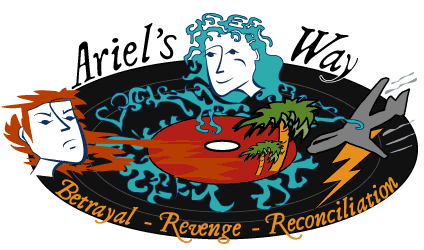 |
| Introducing the professional premiere of Ariel's Way (2010) |
 |
| Playing at my ninth grade prom (1964) |
My next encounter with The Tempest came in college. I led a busy extra-curricular life as an undergraduate, and at this time The Tempest initially appealed to me as one of Shakespeare’s shortest works. “Why read more than I have to?” I asked myself as I ran my finger down the shelf of his collected plays in the Gettysburg College library, searching for one to research independently. It wasn’t quite as short as The Comedy of Errors, but it seemed to have a deeper bottom—plus I had already read it! So I chose The Tempest for a seminar presentation.
This time through, Prospero as a scholar with a vengeance—who perversely “drowns” his books in the end—spoke clearly to my condition. I was emerging as a campus activist who urged others to place politics before scholarship (or, at least, to examine the ends of scholarship in a political context). Plotting the downfall of evil, and book drowning, held great appeal for me, in that epoch!
 |
| Playing at an anti-nuclear rally (1979) |
Ten years later, as a Ph.D. student in Religion and Culture at Duke University, I retraced this theme in greater depth. I came to grips with The Tempest again, this time as a commentary on colonialism. I learned that Shakespeare himself had been an investor in an all-fated voyage of discovery and “plantation.” He was interested in both the economic and the imaginative potential of the New World—my world.
As I delved further into the history of the play, I learned that The Tempest had been written late in Shakespeare’s career and that it had its inception in connection with festivities surrounding the marriage of King James’s eldest daughter. James I (the king who also commissioned the best known English translation of the Bible) was a patron of Shakespeare’s acting troupe, but he was known to the Bard (and everybody else in England?) as a notorious persecutor of witches—indeed, as a masochist who enjoyed watching the tortured confessions of accused heretics. In the way he structured his Tempest materials, was Shakespeare trying to show his liege a better set of religious principles and practices to live by? I, for one, came to think so.
Pursuing commentaries and interpretations (as graduate students are wont to do in defense of their pet critical notions), I noticed that while The Tempest begins as a revenge tragedy, it ends with reconciliation. No dead bodies litter its stage as the curtain rings down. Marriage is in the air as the play ends. Love triumphs. As The Tempest winds down, comedy is wrought from the stuff of tragedy. I was never satisfied, however, with the most common interpretation given for Prospero’s change of heart; i.e., that it is more “seemly” for a king to pardon than to exact revenge. Shakespeare had more to say than that—or would have had, I like to think, if the leading member of his target audience had not been a degraded, sadistic bastard! "Seemliness" was as far as poor King James could get along the path to wisdom.
 |
| Victor (Prospero) and Carib (Caliban) reconcile; Ariel, Sebastian and Toni (Antonio) look on. |
Reviewing sad and tragic circumstances in my own life—and in the lives of my loved ones—led me to value, greatly, the power of forgiveness. Medical doctors and psychologists (such as Edward Hallowell and Gerald Jampolsky), spiritual writers (such as Jack Kornfield), and black journalists (such as Ellis Cose and Patricia Raybon) all have argued, convincingly, for the central importance of forgiveness as a psychological, religious, and political act. My life and teaching has washed me up, again and again, on the shores of Shakespeare’s “New World” text. As I continue examining contemporary American life with critical eyes, I still find forgiveness to be a topic worthy of not just exploration but even devotion.
Thus, understanding the life-affirming process of forgiveness became a central concern of my most recent Tempest research. And dramatizing the power of forgiveness in a compelling way emerged as a major theme of Ariel’s Way.

No comments:
Post a Comment